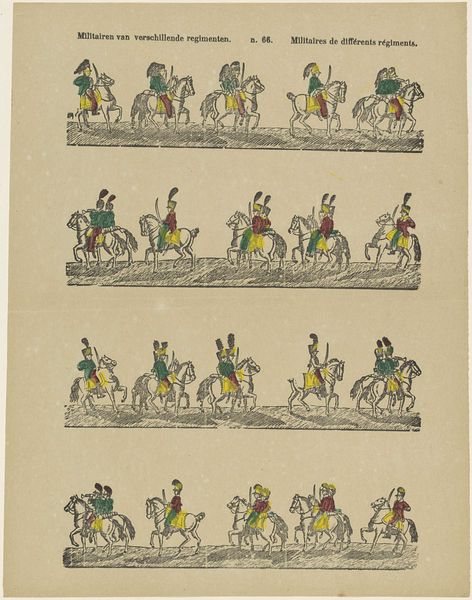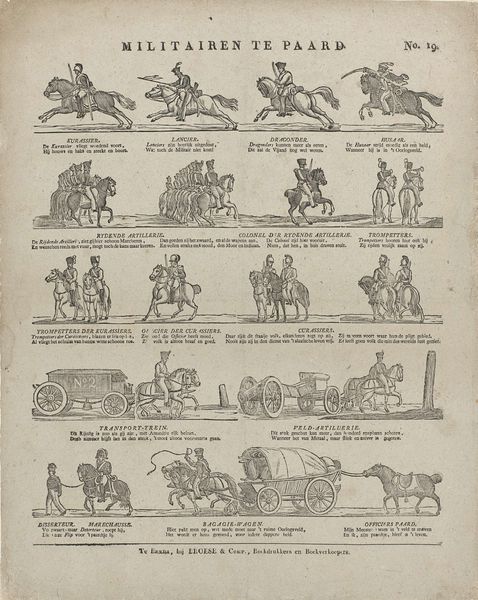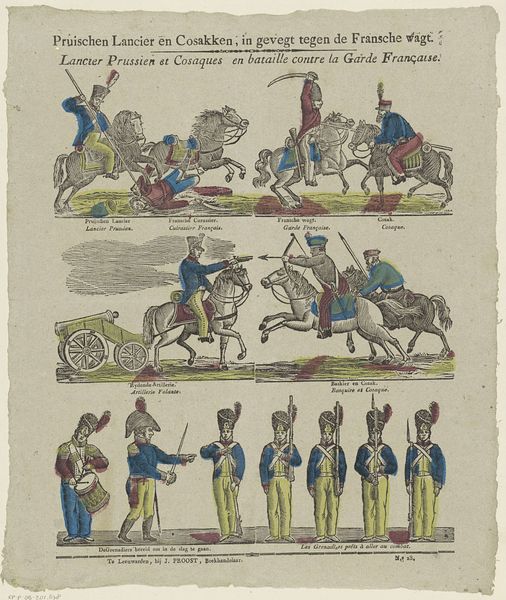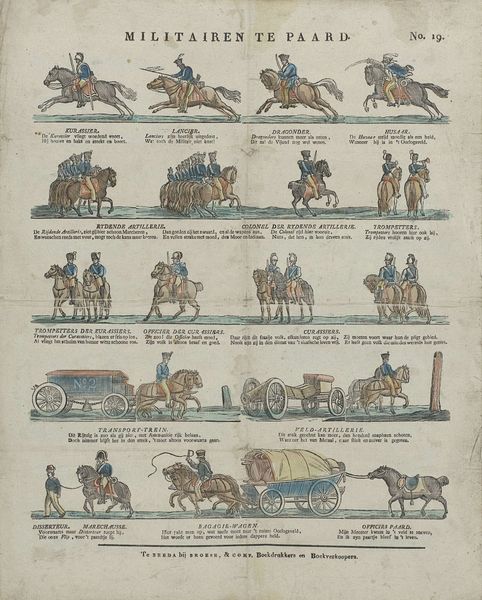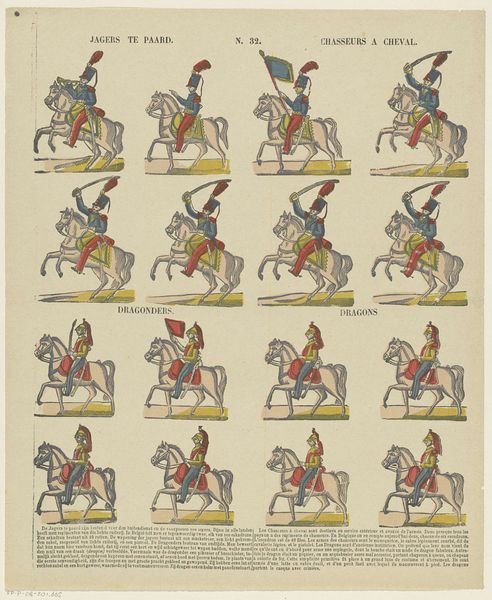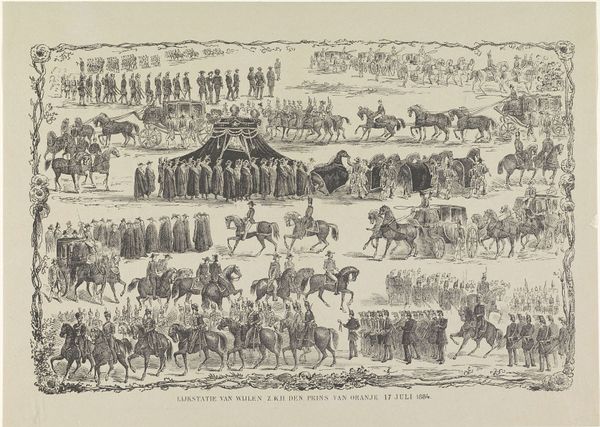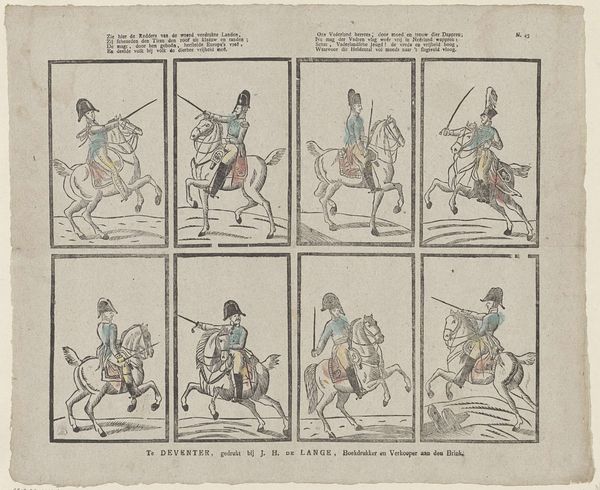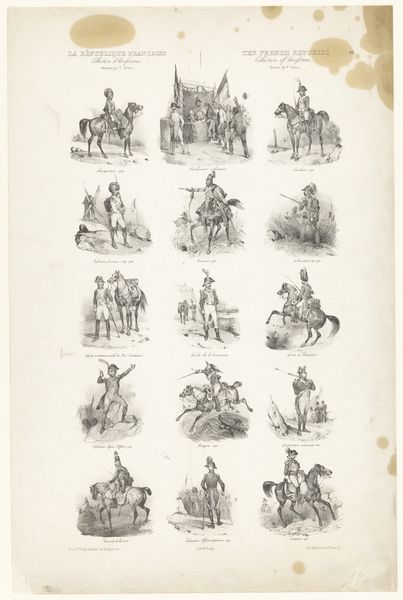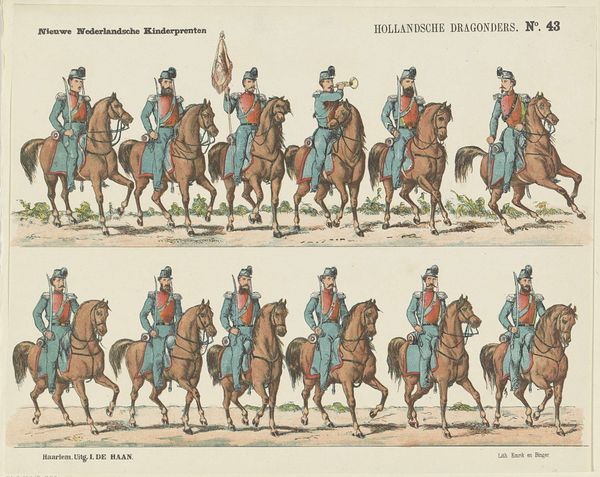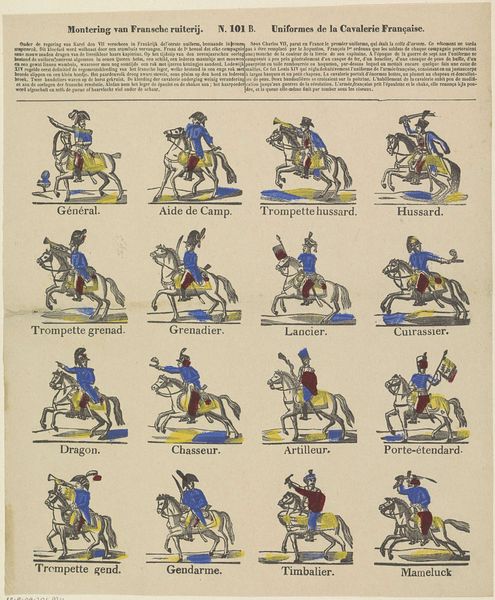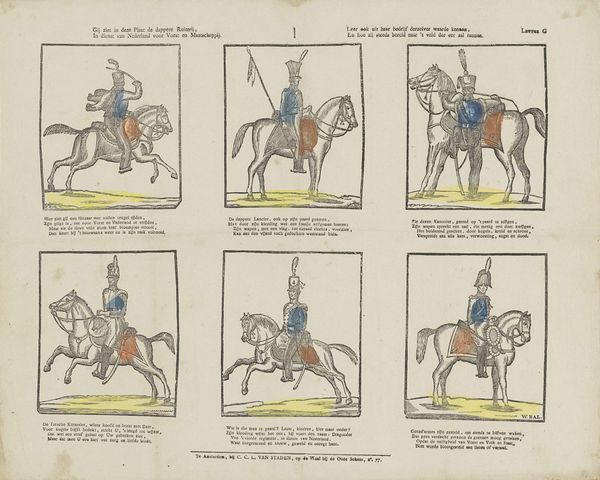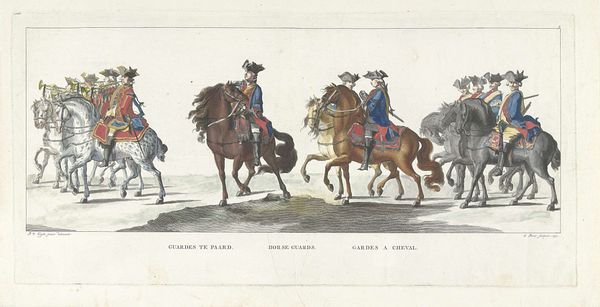
print, etching
etching
genre-painting
history-painting
academic-art
realism
Dimensions: height 426 mm, width 342 mm
Copyright: Rijks Museum: Open Domain
Editor: This is “Nederlandsche Leger,” or “Netherlands Army,” an etching from 1873 by De Ruyter & Meijer. It feels very official, like a military chart, neatly categorizing the different branches. What strikes you most when you look at it? Curator: Immediately, I consider the function of this print in 1873. It’s not simply a portrait of soldiers; it’s a representation carefully curated for public consumption. Academic art, even in printed form, played a significant role in shaping national identity and projecting power. Why present the army in this particular way? What was the purpose of disseminating this image? Editor: So, you are thinking less about artistic expression and more about… propaganda, almost? Curator: Not necessarily blatant propaganda, but certainly image management. The clear classifications, the neat rows – this reinforces the idea of order and control within the Dutch military. And consider when this was made – 1873. The Netherlands was actively engaged in colonial endeavors, particularly in the Dutch East Indies. Editor: How would that context influence this image? Curator: This image implicitly communicates strength and competence. Displaying well-organized infantry, cavalry and artillery subtly signals their ability to maintain order, both at home and in the colonies. The etching also would have served a function of defining and communicating the ranks within the Netherlands Army, informing civilians, and also individuals joining the army about career progression paths, from foot soldier, to Hussar, to Artillerist. Editor: I never considered it from that perspective! I was just seeing a slightly dull historical document, but it clearly has deeper layers reflecting the political climate. Curator: Exactly. And by recognizing that relationship between art and politics, we gain a much richer understanding of its cultural significance.
Comments
No comments
Be the first to comment and join the conversation on the ultimate creative platform.

